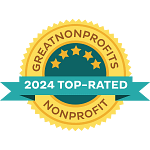For as long as there have been artists, death has been a frequent subject of their work. In poetry, painting, music, photography, theater, film and everything in between, artists have tried to capture the mysteries and sacred rituals surrounding the end of life.
Compassion & Choices seeks to amplify and promote art that helps facilitate conversations about the end of life, as well as normalize the concepts of death and dying. We have compiled a number of resources that present varied end-of-life experiences and perspectives.
Please contact Bonnie Lawhorn at [email protected] with any questions or additional suggestions
Alternate Endings: Six New Ways to Die in America

Six stories of people nearing death and of family members of the recently deceased who have chosen nontraditional end-of-life options and remembrances, from celebrations of life and living wakes to green burials, extraterrestrial burials and more. Profoundly intimate, the film explores what it means to be near death, either from age or terminal illness, and captures the healing power of honoring, giving thanks, and staying true to loved ones who have passed away.
This is a beautiful, calm documentary about nontraditional endings or funerals. These six stories of new ways to die or celebrations of a life that’s ended are all very touching, but the medical aid-in-dying story, which is the longest, also gives the richest development of character and insight into the life of the dying person.
There are six approaches to death profiled in this documentary: Memorial Reef, A Living Wake, Green Burial, Space Burial, Medical Aid in Dying and A Celebration of Life.
Each of the six “alternate endings” is informative and emotional, with beautiful photography and music throughout.
Bob’s Choice: Why a Seattle Man Chose Death With Dignity

Bob’s Choice: Why a Seattle man chose death with dignity has won the Edward R. Murrow Award, a News & Documentary Emmy and the 2021 Alfred I. duPont-Columbia University Award.
Bob Fuller, 75, is a terminally ill, gay Catholic man who uses Washington’s Death with Dignity law to peacefully end his suffering from cancer. Charismatic and engaging, Bob is fortunate to have a large and diverse group of close friends who support his decision. The documentary is an authentic, realistic and empathetic story that follows Bob through the last two months of his life.
Blackbird

Lily (Susan Sarandon) and Paul (Sam Neill) summon loved ones to their beach house for one final gathering after Lily decides to end her long battle with ALS. A remake of the 2014 Danish film Silent Heart, It stars Susan Sarandon, Kate Winslet and Sam Neill.
Lily and Paul, a physician, are an affluent couple living in a beautiful house. The film examines the interfamilial relationships and responses to Lily’s decision to take life-ending medicine before her disease causes further deterioration and she loses the ability to speak, swallow or breathe. While the film does not necessarily address the subject of legality and legal implications with enough scrutiny, which is unrealistic, it does a fair job of presenting kinds of discussions amongst families about the issue. Of course, there is the predictable dramatic augmentation and various subplots woven into the central narrative, but this does not detract from the overall messaging.
End Game

End Game weaves together three stories of visionary medical providers who practice on the cutting edge of life and death, helping to change the way we think about both: the palliative care team at UCSF Medical Center, the most sophisticated acute care hospital in Northern California; Zen Hospice Project, a Buddhist-inspired end-of-life residence in a classic San Francisco Victorian; and B.J. Miller, M.D., a physician who understands suffering firsthand (he lost three limbs in an accident when he was 19), and who has worked with both UCSF and Zen Hospice. For most people, the very words “hospice” and “palliative care” are nonstarters — code words for giving up. This core group of caregivers in San Francisco sees it differently. They are dedicated to relieving suffering, and to changing the way we think about — and make choices about — how we live our lives as we near life’s end. Their commitment is vividly embodied in their interactions with their terminally ill patients. These intimate and often highly charged emotional moments — with caregivers, patients and patients’ families and loved ones — are at the heart of End Game.
End Game weaves together three stories of visionary medical providers who practice on the cutting edge of life and death, helping to change the way we think about both: the palliative care team at UCSF Medical Center, the most sophisticated acute care hospital in Northern California; Zen Hospice Project, a Buddhist-inspired end-of-life residence in a classic San Francisco Victorian; and B.J. Miller, M.D., a physician who understands suffering firsthand (he lost three limbs in an accident when he was 19), and who has worked with both UCSF and Zen Hospice. For most people, the very words “hospice” and “palliative care” are nonstarters — code words for giving up. This core group of caregivers in San Francisco sees it differently. They are dedicated to relieving suffering, and to changing the way we think about — and make choices about — how we live our lives as we near life’s end. Their commitment is vividly embodied in their interactions with their terminally ill patients. These intimate and often highly charged emotional moments — with caregivers, patients and patients’ families and loved ones — are at the heart of End Game.
Here Awhile

Anna, who is terminally ill, returns to Oregon to reconnect with her estranged brother while simultaneously making the heart-wrenching choice to end her life by accessing the Death with Dignity Act in the state. The film provides accurate and clear messaging surrounding the topic of medical aid in dying, incorporating the information seamlessly into a beautifully captured narrative of family struggles, love and acceptance.
Overall, it demonstrates the challenges that can be faced emotionally, not just for the terminally ill individual but also their loved ones, in making a decision to utilize medical aid in dying and also in facing the reality of imminent death due to illness.
How to Die in Oregon

How to Die in Oregon is an intimate, life-affirming, staggeringly powerful portrait of what it means to provide an individual with a full range of end-of-life options. By filmmaker Peter Richardson.
Paddleton

An unlikely friendship between two misfit neighbors becomes an unexpected emotional journey when the younger man is diagnosed with terminal cancer. Starring Ray Romano.
This low-key independent film’s heartwarming theme is unlikely friendship, in sickness and in health. Its biggest accomplishment is that it normalizes medical aid in dying as being simply another option at the end of life. On the other hand, it depicts the complexity of how choosing medical aid in dying can be both a blessed relief for the suffering person, but perhaps difficult for loved ones going on the journey with them. It displays great sensitivity and pathos along with comedic levity and gentleness that tempers the tragic nature of the subject matter.
Choosing to Die: A Personal Story
By Phyllis Shacter

Choosing To Die: A Personal Story by Phyllis Shacter is an honest, moving, detailed personal account of her husband Alan’s concurrent diagnoses of cancer and Alzheimer’s, his path to VSED (voluntarily stopping eating and drinking), and how Alan and Phyllis’ story continues after his death. Shacter covers a broad range of related topics, including spirituality, religion, alternative modalities, grief and healing.
This informative introduction to VSED and end-of-life planning can be considered a useful guide. Shacter includes a collection of accounts gathered from loved ones of people who chose VSED. Shacter’s narrative humanizes and provides a context to the conversation about end-of-life planning and VSED as an option to end unbearable suffering.
This informative introduction to VSED and end-of-life planning can be considered a useful guide. Shacter includes a collection of accounts gathered from loved ones of people who chose VSED. Shacter’s narrative humanizes and provides a context to the conversation about end-of-life planning and VSED as an option to end unbearable suffering.
Shacter includes the notes taken by one of Alan’s caregivers during each of the 10 days of Alan’s fast, providing an enlightening insight into the VSED process. The book includes appendices that provide resources including a short list of medical resources and checklists, important legal documents and forms for end-of-life planning, and a list of strategies to support a friend or loved one who is experiencing grief.
Finish Strong: Putting Your Priorities First at Life’s End
Finish Strong: Putting Your Priorities First at Life’s End

Finish Strong: Putting Your Priorities First at Life’s End by President Emerita/Senior Adviser of Compassion & Choices Barbara Coombs Lee is the guide to achieving the positive end-of-life experience you want and deserve. This book is for those of us who want an end-of-life experience to match the life we’ve enjoyed—defined by love, purpose, and agency.
The usual advice about advance directives and conversations is important but woefully inadequate. This book describes concrete action in the here and now to help live our best lives to the end.
The empowering Finish Strong will guide you through finding a partner-doctor well-suited to your values and beliefs, who exhibits humanity, deference and candor; staying off the “overtreatment conveyor belt”; identifying what matters most as advancing illness takes its toll, and defining your priorities; having meaningful conversations with doctors and family about expectations and wishes for life’s last precious months; knowing when “slow medicine” is the best option to maintain quality of life; navigating home hospice, the ultimate healing experience.
Written with candor and clarity by a former nurse, physician assistant and attorney who became a leading advocate for end-of-life options, this book’s stories, facts and dialogue will help you prepare for latter days that retain the purpose, grace and dignity you’ve always valued. It can help you Finish Strong
When My Time Comes
By Diane Rehm

Diane Rehm, former host of her eponymous NPR show, has assembled a varied selection of interviews on the questions raised by medical aid in dying. Through these interviews, Rehm gives voice to a broad range of people who are personally linked to the realities of medical aid in dying. The book presents arguments for and against — that are propelling the current debates across the nation about whether to adopt laws allowing those who are dying to end their suffering. After opening prefaces by John Grisham, Barbara Coombs Lee and Rehm herself, a series of two dozen interviews draws out the views of those involved in the care, the policies, and the experience of terminal illness. This includes patients, and professionals from family medicine, palliative care, hospice work, chaplaincy, advocacy and clergy, as well as a “death educator,” a legal scholar, a legislator, and family members of the dying. The profiles benefit from Rehm’s fine storytelling skills. The interviews are often frank about questions that remain unanswered; practical issues that lie ahead are mentioned, such as difficulties in implementation of a right to die, and a shortage of physicians trained and willing to assist patients who want to choose the timing of their own deaths.
Cruel Death, Heartless Aftermath: My Family’s End-of-Life Nightmare and How to Avoid It
by Barbara Mancini

Based on a case that was covered nationally, Cruel Death is one-half memoir and one-half a description of the medical systems, laws and politics that led to an absurd and heartbreaking criminal charge. A simple act of compassion on Barbara’s part led her 93-year-old father to a medically intensive, horribly painful death in the hospital. Falsely charged with trying to assist her father in a supposed suicide attempt, she fought back with support from C&C, in a case that consumed a year of her life and cost more than $100,000.
Being Mortal: Medicine and What Matters in the End
by Atul Gawande

Medicine has triumphed in modern times, transforming the dangers of childbirth, injury and disease from harrowing to manageable. But when it comes to the inescapable realities of aging and death, what medicine can do often runs counter to what it should.
Through eye-opening research and gripping stories of his own patients and family, Gawande reveals the suffering this dynamic has produced. Nursing homes, devoted above all to safety, battle with residents over the food they are allowed to eat and the choices they are allowed to make. Doctors, uncomfortable discussing patients’ anxieties about death, fall back on false hopes and treatments that are actually shortening lives instead of improving them. And families go along with all of it.
In his bestselling books, Atul Gawande, a practicing surgeon, has fearlessly revealed the struggles of his profession. Now he examines its ultimate limitations and failures — in his own practices as well as others’ — as life draws to a close. And he discovers how we can do better. He follows a hospice nurse on her rounds, a geriatrician in his clinic, and reformers turning nursing homes upside down. He finds people who show us how to have the hard conversations and how to ensure we never sacrifice what people really care about.
Riveting, honest and humane, Being Mortal shows that the ultimate goal is not a good death but a good life — all the way to the very end.
Modern Death: How Medicine Changed the End of Life
by Haider Warraich

There is no more universal truth in life than death. No matter who you are, it is certain that one day you will die, but the mechanics and understanding of that experience will differ greatly in today’s modern age. Dr. Haider Warraich is a young and brilliant new voice in the conversation about death and dying started by Dr. Sherwin Nuland’s classic How We Die: Reflections on Life’s Final Chapter, and Atul Gawande’s recent sensation Being Mortal: Medicine and What Matters in the End. Dr. Warraich takes a broader look at how we die today, from the cellular level up to the very definition of death itself.
There is no more universal truth in life than death. No matter who you are, it is certain that one day you will die, but the mechanics and understanding of that experience will differ greatly in today’s modern age. Dr. Haider Warraich is a young and brilliant new voice in the conversation about death and dying started by Dr. Sherwin Nuland’s classic How We Die: Reflections on Life’s Final Chapter, and Atul Gawande’s recent sensation Being Mortal: Medicine and What Matters in the End. Dr. Warraich takes a broader look at how we die today, from the cellular level up to the very definition of death itself.
There is no more universal truth in life than death. No matter who you are, it is certain that one day you will die, but the mechanics and understanding of that experience will differ greatly in today’s modern age. Dr. Haider Warraich is a young and brilliant new voice in the conversation about death and dying started by Dr. Sherwin Nuland’s classic How We Die: Reflections on Life’s Final Chapter, and Atul Gawande’s recent sensation Being Mortal: Medicine and What Matters in the End. Dr. Warraich takes a broader look at how we die today, from the cellular level up to the very definition of death itself.
Longevity
A poem by Stephen Zimmerman
When you’ve reached the end of life,
Hopefully, with a minimum of tears and strife,
And death is knocking at your door,
Take my advice,
Don’t ask for more.
You may regret
What you’re asking for.
Ahead lies only sickness and misery,
From doctors who insist on your longevity.
Old age and sickness
Is serious business.
It’s even worse when it’s cancer,
For which there is no easy answer.
Whether rich or poor,
This is a fate no one should endure.
So, if the pain is too great,
There is no reason to wait.
If you are able,
While your mind is still stable,
Take the quick and easy way out,
Exit by a compassionate route.
This is Your Show

Presenting… This Is Your Show, an energetic and inspirational song written and composed exclusively for Compassion & Choices. This Is Your Show creates new avenues for sharing positive, joyful messages about personal empowerment, autonomy, gratitude and planning for an end-of-life experience aligned with YOUR values and priorities. Learn more.
Goodbye New York Concept Album

We are happy to announce a new CD from Compassion & Choices and the songwriting team of Andrew Beall and Evan McCormack! Goodbye New York: a new musical (Concept Album), $15.00 - #1128 - CD.
To learn more about Evan and Andrew and their musical, Goodbye New York, check out the Winter 2021 issue of Compassion & Choices Magazine.






